A new year always brings in with it the hope for a year full of new and exciting advances and in space the year 2018 could very well fulfill much of that promise. Not only do NASA and America’s commercial space companies have a long to-do list but also the European Space Agency (ESA), the Chinese, Japanese and India all plan ambitious space ventures.
Let’s begin with the possibility of manned space flight returning to American soil as the private companies Space X and Boeing are scheduled to make unmanned test launches of their new crew capable space capsules. Space X is currently scheduled to test launch their Dragon capsule around March while Boeing’s Starliner capsule is scheduled to launch around July. Depending on the success of these unmanned test flights, manned flights could begin before the end on the year. The images below show the Dragon and Starliner capsules.
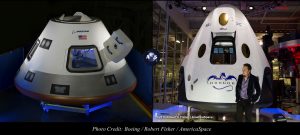
Meanwhile Space X also intends to perform the first test launch of its new Falcon Heavy launch vehicle this very month. When successfully launched the Falcon Heavy will become the most powerful rocket in operation anywhere in the World. Also, since the Falcon Heavy is designed to be reusable like its little brother the Falcon 9 it will also help to bring down the cost of getting into space. The image below shows the Falcon Heavy on its launch pad being prepared for its test flight.
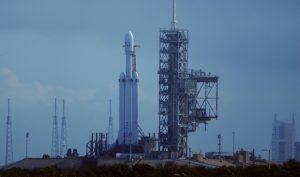
As far as NASA itself is concerned its main emphasis in 2018 will be on inter-planetary probes like the InSight Mars lander (short for Interior Exploration using Seismic Investigations, Geodesy and Heat Transport), which will be launched in May and is expected to reveal many of the details of the interior structure of Mars. Another probe scheduled for a July launch will be the Parker Solar Probe which will come closer to the Sun than any previous spacecraft and actually become the first to enter and study the Sun’s atmosphere or Corona. Also in August of this year the OSIRIS-Rex space probe (which was launched on 8Sept2016) will reach its destination of the asteroid Bennu to begin a three-year mission that will include collecting a sample of the asteroid for return to Earth. The images below show the InSight, Parker Solar and OSIRIS-Rex space probes.
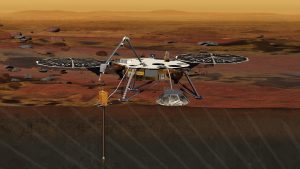
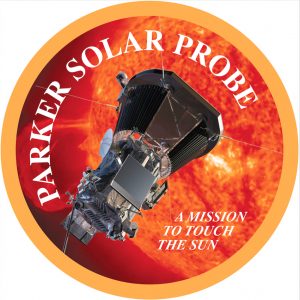
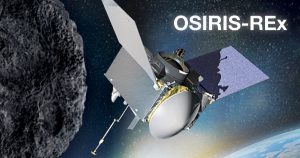
The space agencies of the rest of the World have an equally busy schedule with the ESA launching its BepiColombo spacecraft on a seven-year voyage to the planet Mercury, arriving in 2024, see image below. Meanwhile Japan’s JAXA space agency is anticipating the rendezvous of its Hayabusa 2 probe with the asteroid Ryugu in June. This mission also includes a sample return with the sample arriving on Earth in 2020.
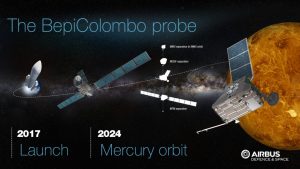
On the other hand China and India have both set their sights on exploring the Moon with China’s Chang’e 5 attempting the first ever landing on our satellite’s dark side. The Chang’e 5 is also a sample return mission so we may learn a great deal about that relatively little know side of our nearest neighbor.
India’s Chandrayaan 2 vehicle, scheduled for a March launch, is a combination of an orbiter and lander with a lander also carrying a small rover down to the lunar surface. Once on the surface the rover’s instruments will study the lunar soil.
Now remember, these are the scheduled space events. You never know, there could be important discoveries by the Juno spacecraft now orbiting Jupiter or the Kepler exo-planet hunting telescope. All in all 2018 looks to be an exciting year.
